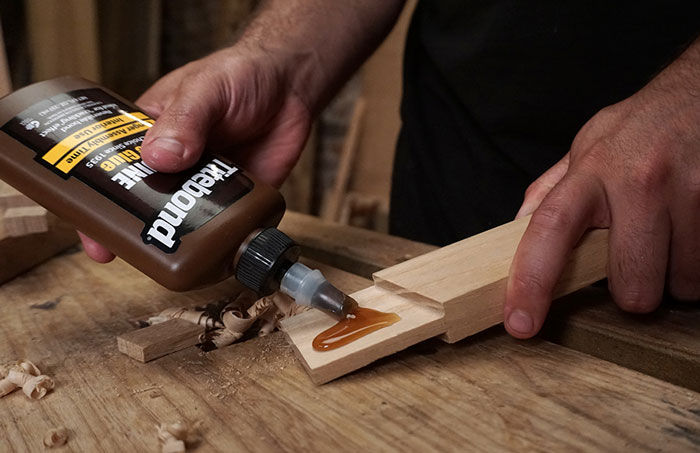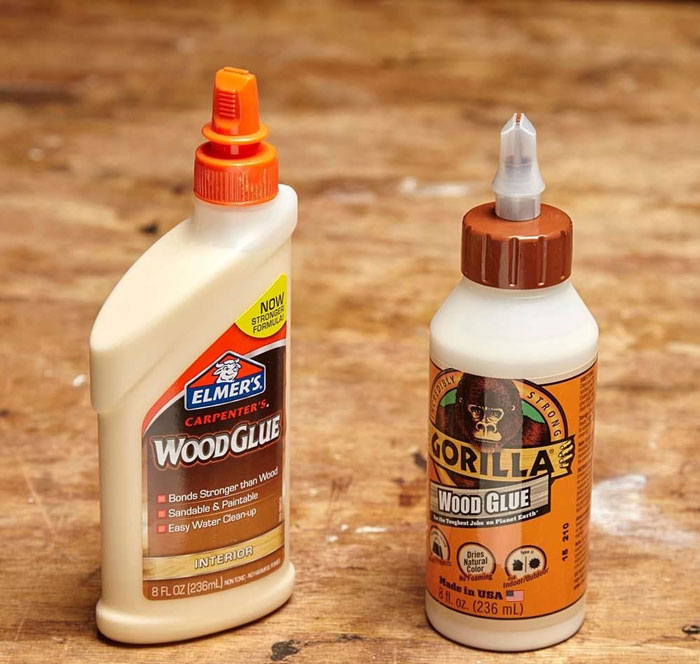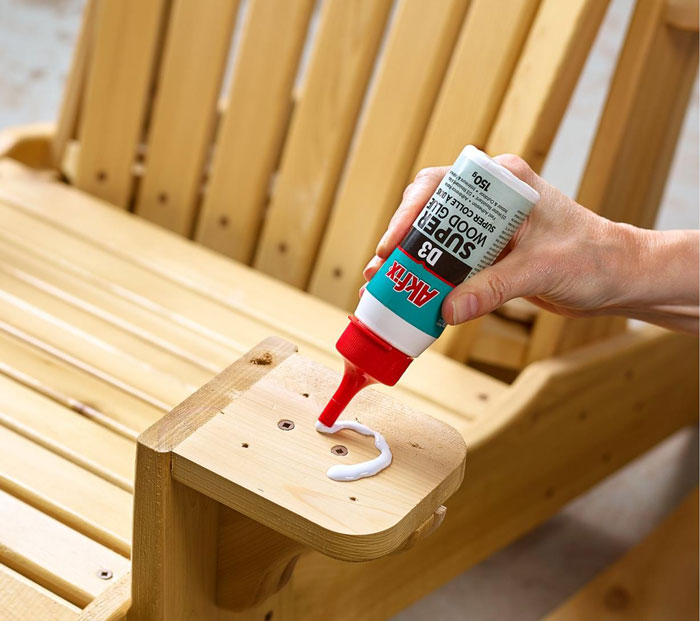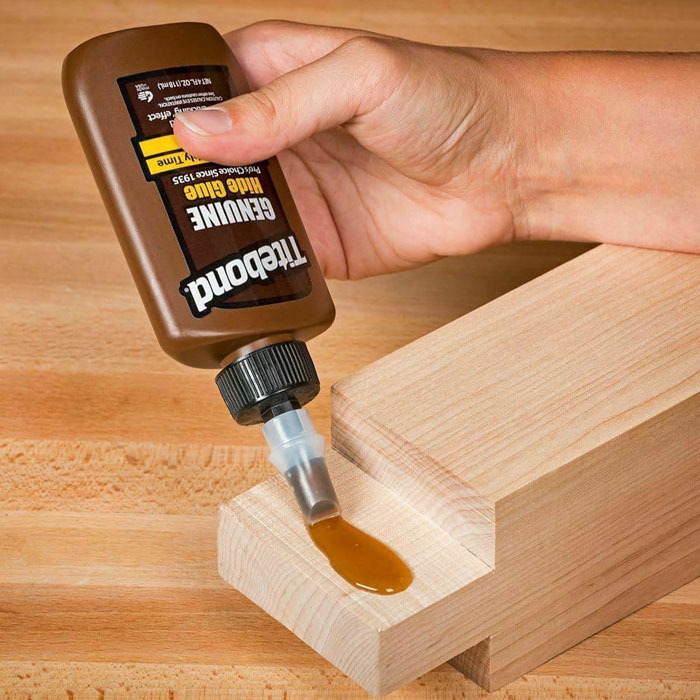Hide Glue Vs Wood Glue: Pros And Cons And Which To Use
Hide glue and wood glue are popular options for woodworking projects due to their impressive adhesive capabilities. However, the two share several differences, which makes each more suitable for a project than the other.
So, hide glue vs wood glue, which one is better? Use hide glue when working on projects that may require to be taken apart, like antique furniture and musical instruments. Choose wood glue when looking for a stronger bond, better water resistance, and a cheaper glue.
The article discusses these two glue types, including the pros and cons of each. Read on to learn which to use and on what projects.
Hide Glue Vs Wood Glue Comparison Table
The following table contains an overview comparison of the two types of adhesive glues.
| Factor | Hide Glue | Wood Glue |
|---|---|---|
| Reversibility | Yes | No |
| Finish | Clear | Yellowish Tint (except the white version) |
| Adhesive Strength | Weaker bond | Stronger bond |
| Price | Expensive | Cheaper |
| Water Resistance | Fairly water resistance | Better water resistant |
| Assembly Time | Longer (10+ minutes) | Faster (5 minutes) |
| Shelf Life | 1 year | 2 years |
What are Hide and Wood Glue? Pros and Cons
Hide and wood glues are crucial in woodworking projects, helping create bonds. The following sections discuss each of these adhesive glue types.

What is Hide Glue?
Hide glue, also called animal glue, is one of the oldest types used in woodworking projects. This glue is made through rendering, a process where an animal’s connective tissues are boiled for a long time.
Hide glue is sparsely manufactured in modern days but is still used in making various musical instruments. This type is loved most for its reversibility, which allows the user to reattach the glued parts without damaging them.
Watch the following video for insights on hide glue.
Pros and Cons
The following list contains some pros and cons of hide glue, starting with the pros.
- Hide glue is non-toxic and eco-friendly, which makes it a great option for people concerned about the environment.
- The glue is biodegradable, meaning it’s recycled back into the environment after use.
- Hide glue also resists creeping, meaning it holds its position after being under load for some time. You can also apply new hide glue on the existing one.
- This glue is also recyclable and can be reused once disassembled. It’s also reversible through heating.
- Also, the longer time hide glue takes to dry is another thing, as it allows you time to disconnect a wrongly installed section.
- Hide glue doesn’t leave stains when it dries, as it dries transparently. It can also be dyed or stained.

The following are the cons of hide glue.
- Compared to other types of glues, the hide glue doesn’t create a strong bond.
- Hide glue is less waterproof than most other types of glue.
- This glue also costs more than wood glue because of its manufacturing process.
- Unpleasant smell during application.
What is Wood Glue?

Wood glue is a synthetic adhesive glue that is more popular in modern woodworking projects. The glue is made from polyvinyl acetate, among other petroleum plastics.
The glue is widely manufactured in modern days and loved for the strong bond it forms with wood.
Pros and Cons of Wood Glue
The following section discusses the pros and cons of wood glue.
- Wood glue is cheaper than other types since it’s faster and easier to manufacture.
- Wood glue, especially PVA wood glue, is safe to handle with bare hands as it isn’t toxic.
- Wood glue dries fast, making it ideal for quick projects.
- This glue creates a strong bond with the surface once applied. The bond also remains for a long time as the glue doesn’t break down.
The following video demonstrates how strong the bond wood glue creates on a wood.
- The glue is also incombustible and doesn’t produce unappealing fumes during and after application.
Here are some cons of using wood glue.
- In most cases, you cannot apply varnish over surfaces with PVA wood glue.
- Wood glue cannot be reversed once applied and is also not recyclable.
- While the glue dries faster to the touch, it takes over a day to fully cure.

Which Should I Use In My Project?
Both glue types are ideal for most projects. However, since they have different properties, one can suit a certain project better than the other.
When To Use Hide Glue
The following section discusses some of the projects you can use for each of these adhesive glues.
- Antique Furniture
When making, maintaining, or repairing antique furniture, use hide glue. Hide glue’s reversibility allows you to disassemble the parts without damaging the furniture’s wooden fibers. Using PVA glue on this item makes repairing hard.

- Musical Instruments
Also, hide glue should be your option as a luthier, especially if you’re working on violins. The glue’s reversibility by heating allows you to disassemble the musical instruments without damaging them.
- Veneering
Hide glue is also advantageous when veneering due to the longer open time. The glue allows you time to place the pieces perfectly, which quick-drying glues, like PVA glue, don’t.
When To Use Wood Glue
The following are the various projects that suit the use of wood glue.
- Outdoor Furniture or Items
Use wood glue when working on furniture or items used in humid or damp areas. Wood glue is better moisture-resistant than most other types and less likely to be damaged by moisture.
- Stronger Bonds
Wood glue creates a strong bond between two surfaces. Use this type when dealing with projects that need a solid bond, like edge-to-edge gluing and miter joints.

- Hot Areas
Wood glue is also ideal for items or furniture stored in hot areas. Unlike hide glue, this type isn’t activated by heat, which means it maintains a strong bond in hot areas.
- Readily Available
Wood glue, like PVA glue, is readily and widely available. Consider using this type in your project if the hide glue is hard to get in your location.
- Issue With Smell
As stated earlier, hide glue has a smell that can be a bother to some people. Use wood glue if you’re among these people affected by this smell.
- Budget
Wood glue is cheaper and widely available, which makes it a great option when working on a budget.
Related Questions
The following section lists three questions related to this topic about hide glue vs. wood glue.
Q1. Why Does Hide Glue Have a Shorter Shelf Life Than Wood Glue?
Hide glue’s organic composition and higher susceptibility to degradation contribute to its shorter lifespan. This glue is more susceptible to microbial growth since it usually lacks preservatives added to other types.
Q2. Which is Easier to Store Between Wood Glue and Hide Glue?
Wood glue is usually easier to store and doesn’t need special storage. The use of additives makes wood glue easier to store in its ready-to-use liquid state. Hide glue requires a cool place, and exposure to cold can allow bacteria and mold to grow.
Q3. Are Wood Glue and Hide Glue Good For Filling Gaps?
Wood glue and hide glue are not ideal for filling large gaps. They have a low viscosity and are susceptible to shrinking during use. However, both glue types can fill small cracks and gaps. For better results, use filling adhesives.
Final Words
In summary, your project type will determine the glue option to use between hide and wood glue. Use hide glue if the item or furniture will be disassembled sometime in the future. However, the popular choice, wood glue, is used for furniture in moist or hot areas and when a strong bond is needed.
The article discusses the pros and cons of these two glue types to help you decide better. For instance, if you’re sensitive to smell, avoid using hide glue, which has a strong scent when wet.





